The current state of the air defense of the countries of the former Soviet Union republics. Part 7
This part of the review focuses on the Central Asian republics: Turkmenistan, Uzbekistan, Kyrgyzstan, and Tajikistan. Before the collapse of the USSR, units of the 12-th separate air defense army (12 OA air defense), 49-th and 73-th air armies (49 and 73 BA) were deployed on the territory of these republics. In the 80-ies, the Central Asian direction was not a priority, and here, unlike the western regions of the USSR and the Far East, the most modern anti-aircraft missile systems, air traffic control devices and interceptors were not sent.
Туркменистан
The grouping of the Soviet army, which remained in Turkmenistan after the collapse of the USSR, was quantitatively and qualitatively better than the weapons that went to Uzbekistan, not to mention Tajikistan and Kyrgyzstan. On the other hand, in Turkmenistan there were not and there are no own military-industrial complex enterprises capable of producing modern weapon, and the level of combat training of personnel is traditionally very low. After the collapse of the USSR, a large Soviet military group came under the jurisdiction of Turkmenistan, including the 17th Air Defense Division with two anti-aircraft missile brigades, a radio technical brigade and a radio technical regiment, the 152nd and 179th Guards fighter aviation shelves. The Armed Forces of Turkmenistan got a variety of equipment, including both modern and frankly rare. So in the Air Force formally included the hopelessly outdated by that time fighter interceptors Yak-28P and light fighter MiG-21SMT. In the anti-aircraft missile units of the 17th Air Defense Division, there were medium-range complexes of the S-75M2 modification, which in 1991 in other parts of the USSR were mainly at storage bases. At the same time, the total number of air defense systems deployed in Turkmenistan was impressive. The layout shows that the positions were located along the border with Iran.
Before the revolution in Iran, this direction was considered one of the most likely to break through the American strategic bombers into the central regions of the USSR. However, after the collapse of the USSR, Turkmenistan also acquired a fairly new technology at that time: S-75М3, С-125М, С-200ВМ (more than 50 PU in total) and MiG-23ML / MLD fighters, MiG-25ПД, MiG-29 fighters. In the radio parts there were about a hundred radars: P-15, P-14, P-18, P-19, P-35, P-37, P-40, P-80.
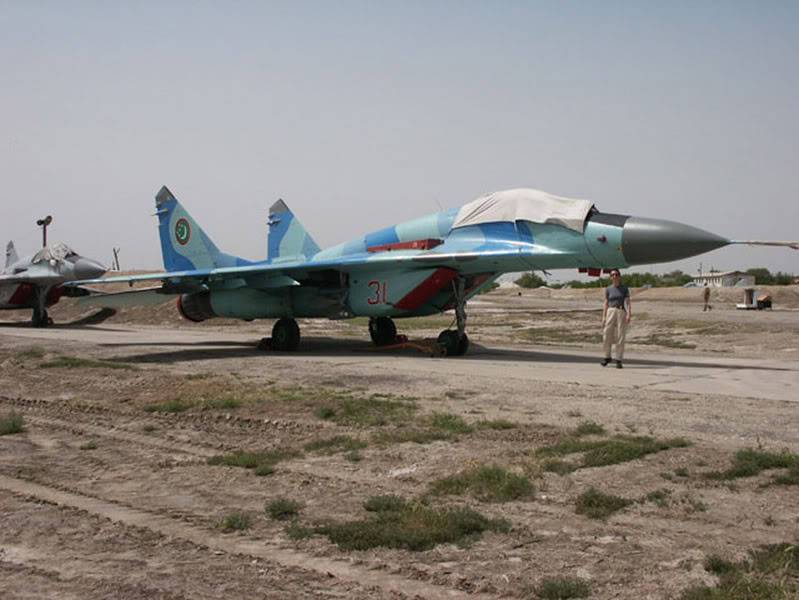
After the division of the Turkestan Military District of the USSR between the independent states of Central Asia, the largest air force in Central Asia deployed on 2 large bases under Mary and Ashgabat fell to the share of Turkmenistan. The number of fighters transferred to the republic capable of performing air defense tasks was unprecedented. In total, Turkmenistan without considering the outdated Yak-28P and MiG-21SMT received more than 200 MiG-23 of various modifications, 20 MiG-25D and approximately 30 MiG-29. A significant part of this technology was in "storage" and in a few years actually turned into scrap metal.
In the 21 century, the number of operational complexes declined sharply, in 2007, the sky of Turkmenistan was defended by the Turkmenbashi anti-aircraft missile brigade and two anti-aircraft missile regiments, where in service were a dozen and a half dozen C-75М3, С-125М and С-200ВМ. At the moment, two dozen radar stations monitor the air situation.
In the air force, the 20 MiG-29 (including the 2 MiG-29UB) is capable of carrying out the tasks of fighting an air enemy. Repair and modernization of the Turkmen fighters was carried out at the Lviv aircraft repair plant. In addition, air combat missiles P-73 and P-27 were delivered from Ukraine. It is worth saying that Ukraine in the past played a major role in maintaining the air defense potential of Turkmenistan in working condition, and a part of the C-200ВМ and С-125М was also reconstructed. To replace outdated Soviet radars, modern radar systems 36D6 and radio intelligence stations "Kolchuga-M" were delivered.
However, foreign military assistance did not help Turkmenistan much in strengthening its own defense capability. Due to the persecution of specialists of a “non-titular nation,” Turkmenistan left most of the non-Turkmen military personnel. Local cadres could not become a full-fledged replacement for them. So according to expert estimates, in the 2007-2008 years in the Air Force, there were 25-30 pilots with sufficient qualifications to control a combat aircraft, and this despite the fact that the aircraft had 10 times more. Of course, now the situation in Turkmenistan has changed somewhat, but national armed forces still continue to experience a shortage of technically well-trained personnel. It also fully applies to anti-aircraft missile units.
The layout of the air defense system and radar on the territory of Turkmenistan as of 2012 year
Currently, the positions of combat duty of anti-aircraft complexes can be counted on the fingers of one hand. Moreover, even on the complexes considered to be operational on the launchers there are single anti-aircraft missiles, at best, this is the 1 / 3 positioned for ammunition. The Russian-Belarusian company Defensive Systems carried out work on upgrading the C-125М to the level of the Pechora-2М under the contract of 2009, but modernized one hundred and twenty-fives are not involved in the ongoing combat duty, but regularly participate in parades.
In general, the level of combat readiness of the Turkmen air defense forces is low. Thus, in recent satellite images of the year dated 2016, it can be seen that of the three C-125М SAMs deployed in the vicinity of Ashgabat, only one of the missiles are installed on launchers. In this case, two missiles are equipped with only two of the four PU. That is, instead of the 16 anti-aircraft missiles laid, only four can actually be used.
The same picture is observed in the C-200ВМ ЗРК positions deployed under Mary and Turkmenbashi. None of the 12 launchers are equipped with missiles. Perhaps this is due to the limited number of operational rockets and the deterioration of the hardware of the complexes. Although there are no anti-aircraft missiles on launchers, the entire infrastructure of the complexes is preserved and maintained. Access roads and technical positions cleared of sand.
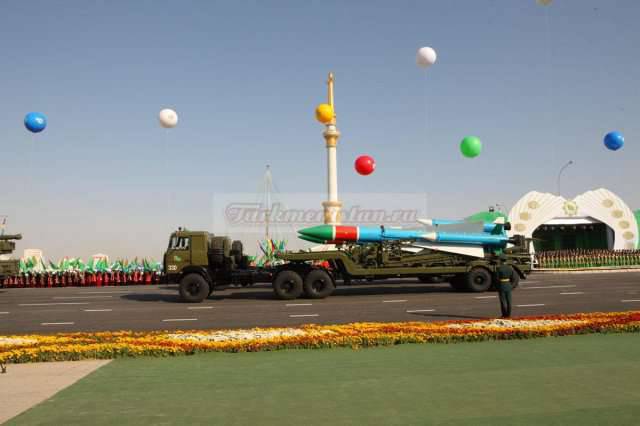
Turkmenistan, along with Azerbaijan and Kazakhstan, has remained one of the last republics of the former USSR, where long-range C-200 air defense systems with anti-aircraft missiles remained in service. While the Dukhsotkos are no longer in combat duty, very large anti-aircraft missiles play an important ceremonial role. SAM 5B28 painted in the colors of the national flag look very impressive on military parades.
According to the reference data in the air defense of the Land Forces of the Armed Forces of Turkmenistan has: 40 SAM "Wasp", 13 "Strela-10" 48 ZSU-23-4 "Shilka", about 200 zenith 100 caliber guns, 57, 37 and 23-mm. , as well as around 300 MANPADS "Igla" and Mistral. It is known that in the territory of Turkmenistan, with the division of the Soviet military legacy, there remained two regiments of military air defense systems "Kub" and "Krug", but, apparently, they are no longer combat-ready. In the past few years, the Turkmen Krug complexes have been participating only in military parades and do not leave the territory of a military unit near Ashgabat for firing and exercises.
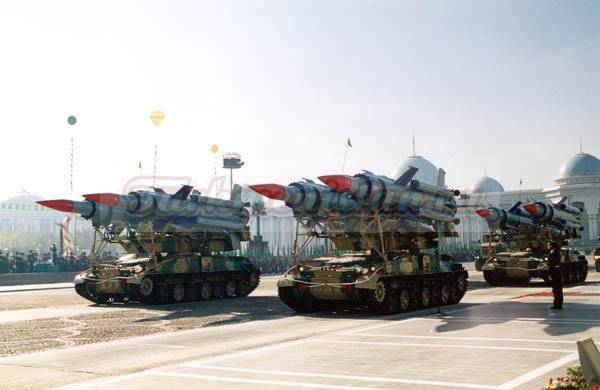
Turkmenistan is a very closed country and it is difficult to judge how things are going with the air defense systems. But, according to some experts, the proportion of serviceable equipment in the air defense forces is less than 50%. At the same time, Turkmenistan is the only CIS country that has not signed an agreement on measures to control the proliferation of man-portable air defense systems.
Turkmenistan has unresolved disputes over Azerbaijan due to the status of the Caspian Sea and disagreements over the distribution of quotas for gas transportation through the projected trans-Caspian pipeline. The country has a complicated relationship with Uzbekistan, which recently has been called a powder keg of Central Asia by a number of experts. This forces the republic rich in natural gas to spend significant funds on the purchase of modern weapons. Gradually, the Central Asian republics begin to arm themselves with Chinese high-tech weapons, including air defense weapons.
At the beginning of 2016, large-scale military exercises took place in Turkmenistan, where the Chinese anti-aircraft missile system FD-2000 (export version HQ-9) was demonstrated. Simultaneously with long-range missiles, long-range surveillance radars were acquired. Apparently, several dozen Turkmen military personnel received training and education in the PRC. Until recently, the parties managed to keep the fact of the delivery of Chinese missiles to secret from the general public, although rumors in the media were leaking. The leadership of Turkmenistan chose not the Russian ZRS-NNUMXPMU300, but the Chinese anti-aircraft systems, indicating a growing Chinese influence in the region.
Uzbekistan
The armed forces of Uzbekistan are among the most powerful in Central Asia. In 2014, in the Global Firepower Index rating (World Rating of Military Power), the Armed Forces of Uzbekistan took the 48 place from the 106 member countries. Among the countries of the post-Soviet space, the Uzbek army took the 3 place, after the Russian Federation (2 place) and Ukraine (21 place). In reality, the Uzbek army in number and level of combat training is inferior to the Kazakh.
In contrast to Turkmenistan, initially, less combat aircraft initially fell into the Air Force of Uzbekistan, but thanks to the cooperation with Russia and the presence of their own aircraft repair base, they were much better preserved. Before the collapse of the USSR, the 115 th Guards Fighter Orshansky Order of Kutuzov and Alexander Nevsky Aviation Regiment based on the MiG-29 was based at the airfield of Kakaida. In 1992, equipment and weapons of the 115 giap was transferred to the Air Force of the Republic of Uzbekistan. After which the regiment was renamed 61-iap. At the airfield Chiric based 9 th iap on the Su-27. Now all Uzbek fighters are reduced to the 60-th mixed aviation brigade.
According to information published by IISS The Military Balance for the 2016 for the year, the Air Force lists 24 heavy fighters Su-27 and 30 light MiG-29. However, according to the latest data, only 6 Su-27 and approximately 10 MiG-29 are in flight state. Despite the fact that in the past, the aircraft was repaired at the Tashkent Aviation Plant, without foreign aid from Russia in the first place, the number of fighter fleets in Uzbekistan could be greatly reduced in the near future.
In Soviet times, the 15-I Air Defense Division with headquarters in Samarkand was located on the territory of Uzbekistan. The headquarters and the command post of the 12 separate defense army were located in Tashkent. The formation of the anti-aircraft missile forces of the organizational units of the Air Force of Uzbekistan was carried out mainly on the basis of the 12-th anti-aircraft brigade and equipment. From ZRVV air defense of the USSR got about medium-range complexes C-75М2 / М3, low-altitude С-125М / М1 and long-range С-200ВМ.
The operation and maintenance of complex and costly to maintain C-200В turned out to be “inconvenient” for Uzbekistan. The number of workable C-75М3 a few years after independence was sharply reduced, but some complexes survived to 2006 year.
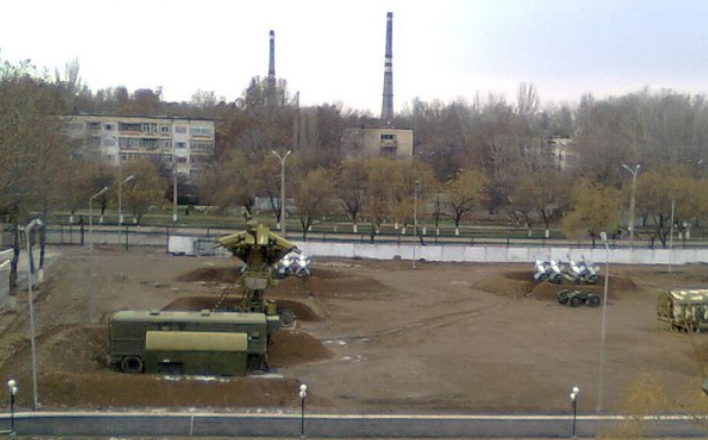
At the moment, only the C-125М1 air defense system remains in service with the Uzbek air defense forces. Four complexes cover Tashkent and two more are deployed on the Afghan-Uzbek border in the Termez area. Several Uzbek complexes have been upgraded to the C-125 “Pechora-2M” level. In 2013, there were reports of a contract for the supply of Chinese FD-2000 air defense systems to Uzbekistan. Unlike Turkmenistan, FD-2000 has not yet been demonstrated at the exercises in Uzbekistan, and it is not clear whether they are there at all.
Airspace monitoring is carried out by a dozen heavily worn radars P-18 and P-37. Russia has transferred several modern stations to Uzbekistan, which are installed on the border with Afghanistan and around Tashkent.
Reliable data on weapons and air defense status of the Land Forces of Uzbekistan is very small. The reference materials indicate that the troops have up to 400 MANPADS and a certain amount of obsolete Strela-1 air defense missile systems based on the BRDM-2. Apparently, there are several dozens of ZSU-23-4 Shilka and ZU-23, but it is difficult to say to what degree of combat readiness they are.
In general, the capabilities of the armed forces of Uzbekistan in the air defense unit are very weak, and the point is not only that the troops have extremely worn out and outdated equipment. In 1990, local officers made up only 0,6% of the total number of military personnel stationed in the country. Nevertheless, Islam Karimov made a stake on the national cadre, from the middle of the 90-s, the policy of ousting the Russian-speaking officers and replacing them with Uzbeks drafted from the reserve began. It is clear that the technical knowledge and qualifications of Uzbek officers, who for the most part are dekhkans, were often an order of magnitude inferior to the level of training and business skills of personnel military specialists who graduated from military colleges and served 10-15 years in technical positions. This led to the fact that the combat readiness of air defense units of Uzbekistan has plummeted. To maintain the Air Force and Air Defense at the proper level, it was necessary to recruit Russian-speaking pilots and specialists under contract in the CIS countries.
In 2001, Islam Karimov, after the start of the antiterrorist operation in Afghanistan, put at the disposal of the United States the airport Khanabad, in the vicinity of Karshi. The Pentagon modernized the Khanabad airbase to meet its standards. The runway was repaired and the necessary modern means of communication and navigation were installed. At that moment, almost all military aviation equipment was deployed in Khanabad for the rear support of US troops in Afghanistan: more than 30 military transport aircraft C-130 and C-17, as well as combat F-15Е and F-16С / D. More than 1300 American troops were stationed at the base. Until a certain point, Khanabad was the largest US airbase in Central Asia. However, already in the 2005 year, after the events in Andijan, the Americans were expelled from the territory of Uzbekistan, "for the support of local radicals and international terrorism." In response, Washington imposed a number of sanctions against Tashkent. However, after a few years, the sanctions were lifted and the United States again began to show signs of attention to the Uzbek leadership.
American representatives of the highest rank voiced interest in returning the US military forces to Uzbekistan and placing them at the Khanabad airbase or at Navoi airport. A few years ago, the United States was able to deliver non-military goods through the civilian Navoi airport. Apparently, the Americans also have a desire to deploy their own infrastructure on the Uzbek-Afghan border at the airbase in Termez, where the Bundeswehr military stationed. The military airfield in Termez is the first German base outside Germany after the end of World War II. The Uzbek city of Termez is located on the northern border of Afghanistan and has everything you need to transport goods - the airport and the railway line. Germany has used an air base in this strategically important city since 2002, to provide a foreign military contingent in Afghanistan. After the closure of the US Transit Center in Kyrgyzstan in 2014, the German airbase in Termez remains the only NATO military base in Central Asia. It was assumed that, after the end of Operation Enduring Freedom in Afghanistan, Germany would withdraw its troops. The main part of the German military left Afghanistan three years ago, but despite this, the air base continued to exist. Earlier this year, the publication Der Spiegel reported that Germany was negotiating to extend the lease of its air base in Uzbekistan, and that Tashkent wants to increase the rent for 2016 a year to 72,5 million euros, almost doubling the current amount.
Kyrgyzstan
In Soviet times, relatively few units of the Soviet Army were located on the territory of the Kirghiz USSR. The armed forces of the Kyrgyz Republic formed 29 in May 1992, when by the decree of Kyrgyz President Askar Akayev, units and units of the Soviet Army located in the republic were taken under its jurisdiction. Kirghizia got the equipment and weapons of the 8 th guards motorized rifle division, the 30 th separate motorized rifle regiment, the 145 th guards anti-aircraft missile brigade, which was part of the 33 th air defense division. In the Frunze Military Aviation School (322-th Training Aviation Regiment) there were about 70 MiG-21 fighters. In Soviet times, in addition to personnel of the USSR Air Force, pilots and specialists for developing countries were trained here. After independence was gained by Kyrgyzstan, a part of the aircraft was sold abroad. Currently, all Kyrgyz MiGs are not combat-ready, without any chance of returning to service.
In 2006, a new type of armed forces was created in Kyrgyzstan, which included the Air Force and Air Defense - the Air Defense Forces (SVO). By that time, there were no longer any fighters in the flying state left in the republic, and of the capable air defense systems in existence were 2 С-75М3 and five С-125М. Now under Bishkek one C-75М3 and two C-125М are deployed.
The airspace is surveyed by six radar posts equipped with P-18 and P-37 stations. The most modern radar 36Д6 is at the disposal of the Russian military at the Kant airbase.
This may seem strange, but the Kyrgyz anti-aircraft calculations, unlike the Uzbek and Turkmen colleagues, are really on alert. On the launchers deployed SA-N is the required number of missiles. This will be explained by the fact that Kyrgyzstan is a member of the CSTO and Russia spends a lot of money on maintaining the Kyrgyz air defense systems in working order.
Kyrgyzstan is a member of the Collective Security Treaty Organization (CSTO) and is part of the Unified Air Defense System of the CIS Member States (CIS Air Defense System). Thanks to Russian assistance, the very new Kyrgyz air defense system is still capable of carrying out combat missions. This assistance is in the supply of spare parts and standard rocket fuel for liquid missiles, as well as in the preparation of calculations. About once every two years, the Kyrgyz military with their anti-aircraft complexes participate in joint exercises of the armed forces of the CSTO and the air defense system of the CIS, and travel to Russian or Kazakhstan training grounds for control and training firing.

A year ago, plans were announced to modernize the air defense system of Kyrgyzstan. First of all, it is supposed to replace and, if possible, upgrade the existing surveillance radars in the republic. In the future, possible supply of short-range and medium-range anti-aircraft systems. However, specific types of weapons were not called. Most experts are inclined to believe that we are talking about the upgraded C-125 “Pechora-2M” air defense systems, which are already in place in a number of Central Asian republics.
In the air defense units of the Kirghizian Army, there are two dozen ZSU-23-4 Shilka, four 57-mm batteries of C-60 automatic anti-aircraft guns, and some ZU-23 and Strela-2M and Strela-3 anti-aircraft systems . In August, 2000, part of these forces was involved in hostilities, with militants of the Islamic Movement of Uzbekistan (IMU) invading the country. It is clear that the anti-aircraft gunners did not fire at the militants' aviation, which they fortunately did not have, but supported with fire the offensive of their ground units. 57-mm anti-aircraft guns mounted on tracked tractors were especially effective in mountainous areas. A large elevation angle and a decent firing range made it possible to conduct effective fire at targets on mountain slopes at a distance of several thousand meters. A high combat rate of fire, combined with a fairly powerful fragmentation projectile, literally did not allow the IMU militants to “raise their heads” and leave the shelter behind the stones for organized resistance or withdrawal.
In 2001, in connection with the invasion of US troops into Afghanistan, the air base of the anti-terrorist coalition began to operate in the territory of Manas International Airport in Kyrgyzstan. 22 June 2009, the Kyrgyz Republic and the United States signed agreements according to which the Manas Air Base was redeployed to the Transit Center. For the operation of the Transit Center, the budget of the Kyrgyz Republic annually received 60 million USD. In 2014, the US military left the Manas airbase. During this time, hundreds of thousands of tons of cargo and a large number of foreign military personnel have passed through Manas. Now as an intermediate point for the delivery of goods to Afghanistan used an air base in Romania. In Kyrgyzstan, only the Russian military remain on a permanent basis.
In September, 2003, Russia concluded an agreement with 15 for years with Kyrgyzstan on the deployment of an aviation unit in Kant as part of the Collective Rapid Deployment Forces of the CSTO. According to the contract, no fee was charged from Russia. The main objective of the airbase is air support of the actions of the military units of the Collective Rapid Deployment Forces of the CSTO. In 2009, the contract was extended by 49 years, with a possible extension by another 25 years. In the near future, the air base is reconstructing the runway and the airfield infrastructure. It is expected that upon completion of the work, upgraded Su-27CM and Su-30CM fighters will be sent here, which will significantly enhance the capabilities of the collective air defense system.
Tajikistan
The armed forces of Tajikistan formally appeared on February 23 of the year 1993. Unlike the rest of the former Soviet republics of Central Asia, Tajikistan received the minimum amount of armament of the former Soviet army. Subsequently, Russia took the most active part in arming the Tajik army and training personnel for it.
Tajikistan is a member of the CSTO and the CIS Air Defense System, which makes it possible to gain access to air defense systems and conduct regular practical training and control firing of the air defense missile system. In 2009, the upgraded Pechora-125М С-2 complexes from Russia were supplied. Prior to that, in the second half of the 90 republic, the C-75М3 and С-125М radar systems П-19, П-37, 5НХNUMXА were transferred to the republic.
Satellite image of Google earth: the position of the Pechora-125М С-2 SAM system in the vicinity of Dushanbe
At the moment, the C-75М3 air defense system in Tajikistan has been decommissioned. On the combat positions, east and west of Dushanbe, there are two C-125 "Pechora-2M" air defense missile systems (536-th anti-aircraft missile regiment). The two modernized complexes are the pride of the Tajik military. Perhaps these are the most high-tech weapons available in Tajikistan. The maintenance of a small number of low-altitude complexes on combat duty in the vicinity of Dushanbe, of course, does not make a large contribution to the combat capabilities of the unified air defense system. The information received from survey radars is of much greater value. But the experience gained during the operation of modernized anti-aircraft complexes, allows national personnel to create a reserve for further development. In addition to the upgraded "hundred twelve" of anti-aircraft weapons in the Tajik army there are ZU-23 and MANPADS. There are discrepancies regarding portable zenith complexes. Some sources say that the US military FIM-92 Stinger are in service with the Tajik military, which seems unlikely.
In 2004, on the basis of the 201 th motorized rifle Gatchina twice Red Banner division, the 201 th Russian military base was formed (the official name is the 201 th Gatchina Order of Zhukov twice Red Banner military base). The base is located in the cities: Dushanbe, and Kurgan-Tube. The stay of the Russian military in the republic is provided for up to 2042. This is the largest Russian land military base outside the Russian Federation. The goal of the Russian military presence in the republic is to maintain peace and order in Tajikistan and to assist the Border Troops and the Ministry of Defense of Tajikistan. Russian air defense systems are provided by 18 Osa-AKM (12 Osa-AKM, 6 Strela-10) and 6 ZSU ZSU-23-4 Shilka. Also at the disposal of the Russian military are towed anti-aircraft installations ZU-23 and MANPADS "Igla". In 2015, information was announced about the intention of the Russian Defense Ministry to replace the outdated “Wasps” and “Strely” in the air defense units of the 201 base with modern Tor-M2 air defense systems.
In addition to Russia, substantial military assistance to Tajikistan is provided by India. The Indian Air Force has an advanced operational air base in Parhar, 130 kilometers south-east of the capital Dushanbe. India has invested about 70 millions of dollars in an almost completely destroyed airfield. Currently, all activities on the territory of the airbase are classified. According to some reports, the squadron of Mi-17 helicopters, training aircraft "Kiran" and MiG-29 fighters are stationed here. Parhar air base provides the Indian military with broad strategic opportunities in Central Asia. In this regard, former Pakistani President Pervez Musharraf expressed concern, stressing the possible increase in the influence of India in Afghanistan. According to him, in the event of another conflict, the base will allow the Indian Air Force to completely surround Pakistan from the air.
To be continued ...
Based on:
http://myzarya.ru/forum1/index.php?showtopic=6074
http://www.nationaldefense.ru/includes/periodics/armstrade/2015/0119/190914995/detail.shtml
http://www.popsci.com/dragon-muscles-in-growing-number-victories-in-chinese-arms-exports
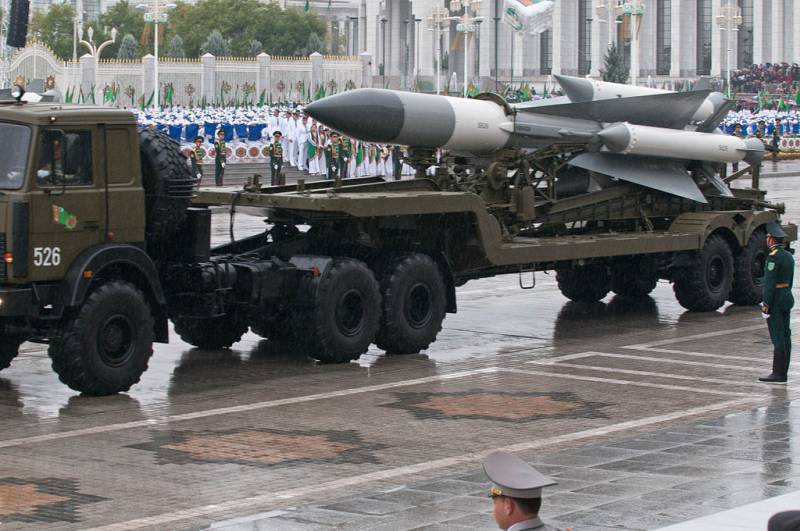
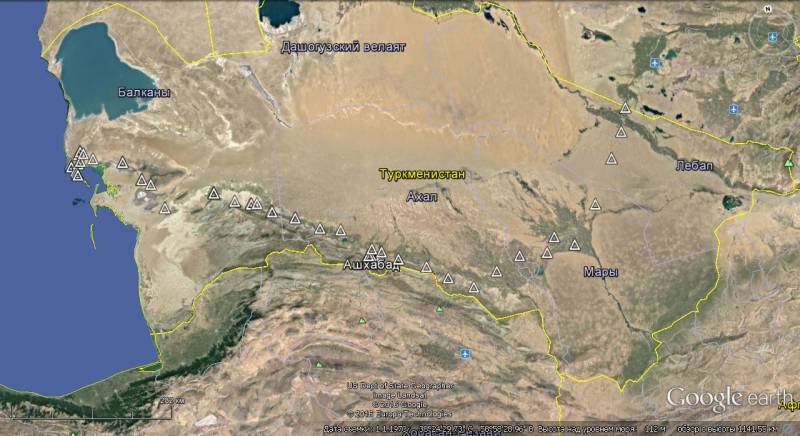
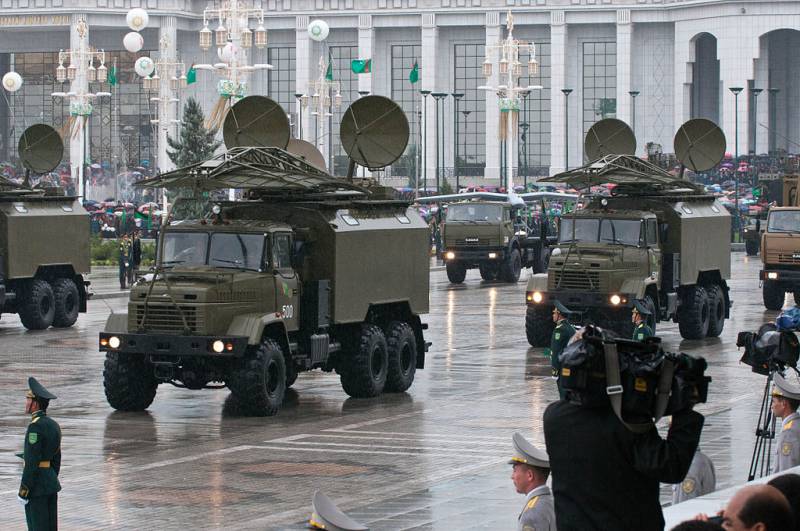
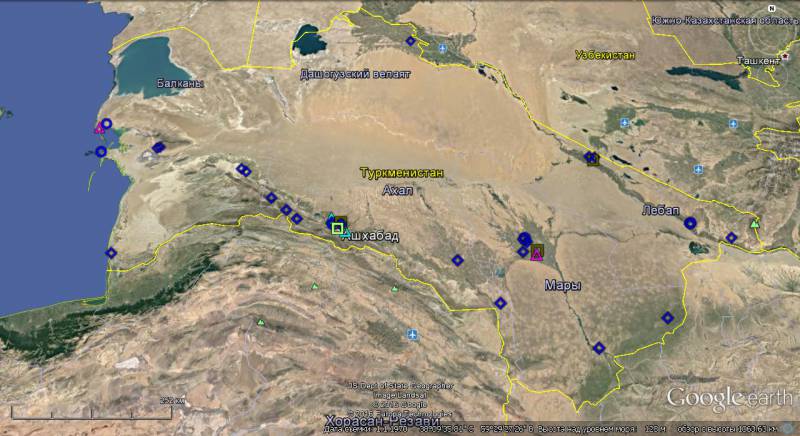
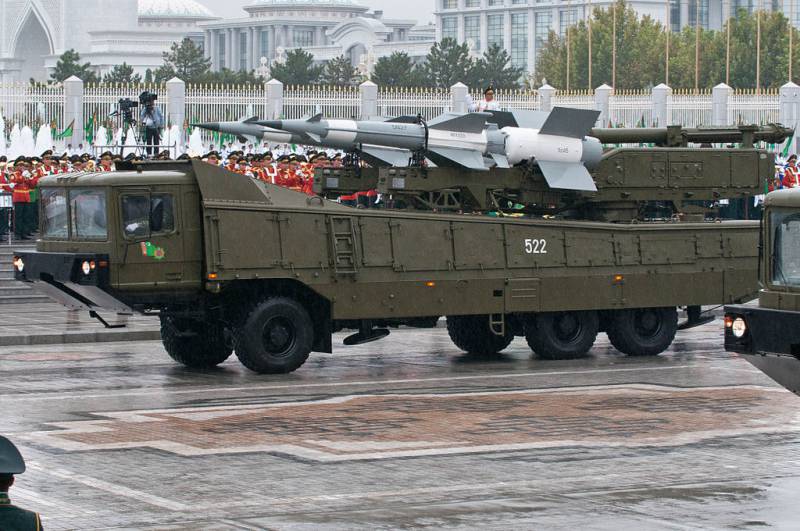
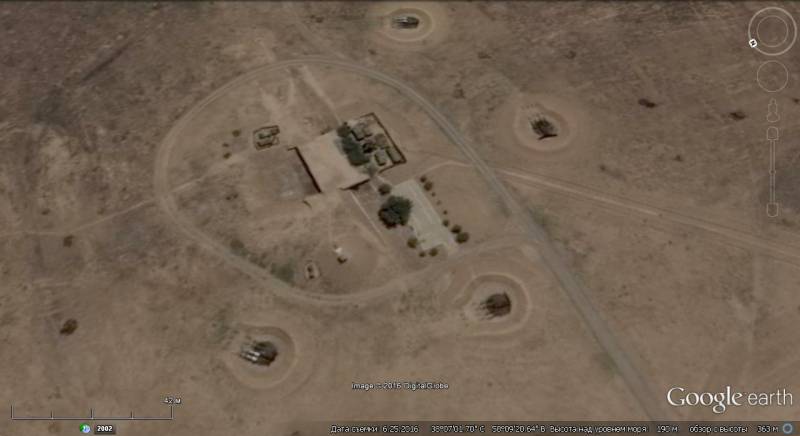
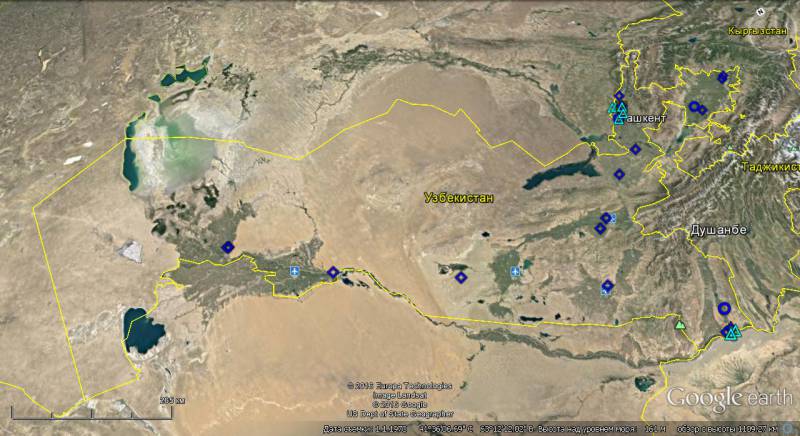
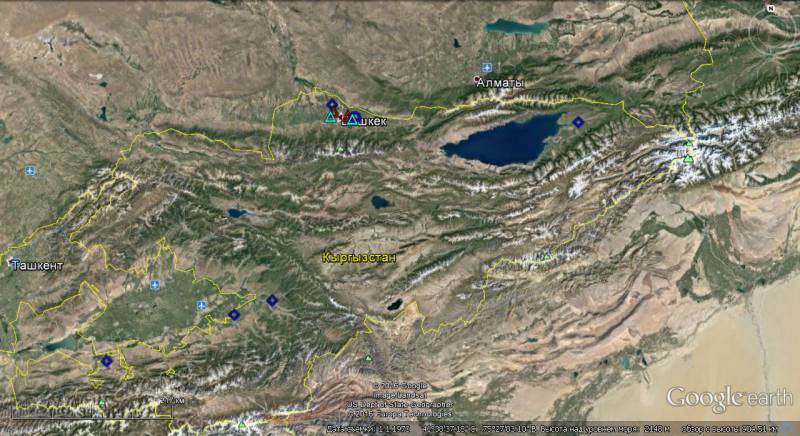
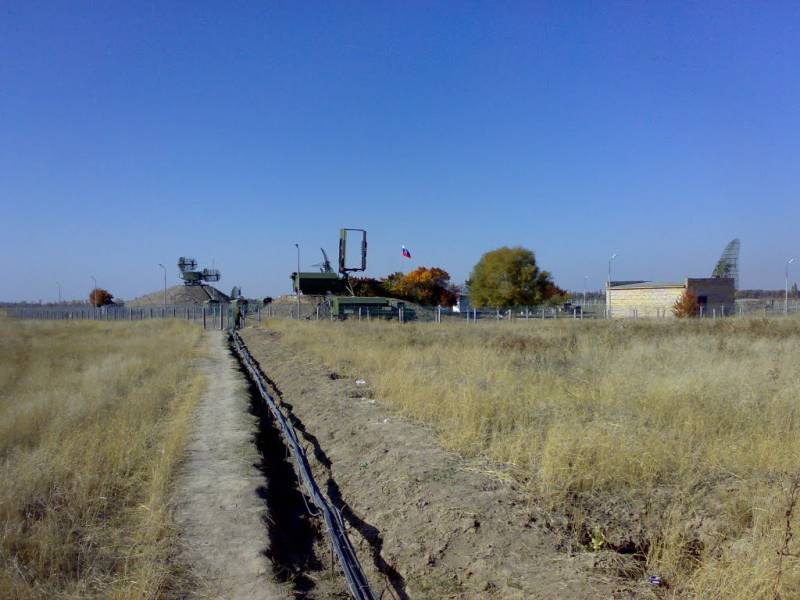
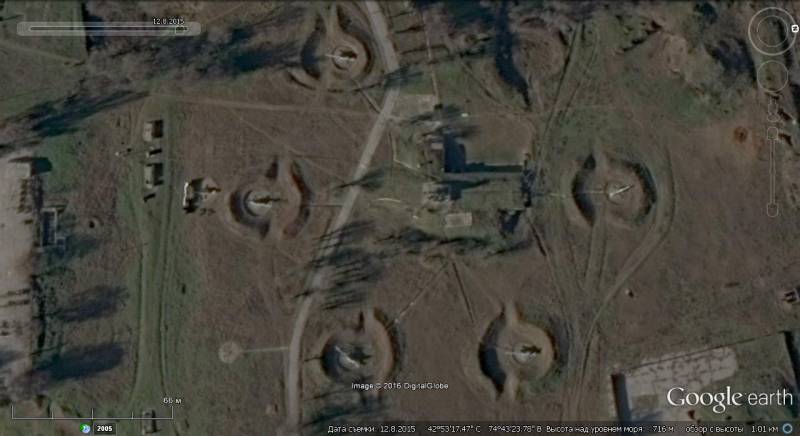
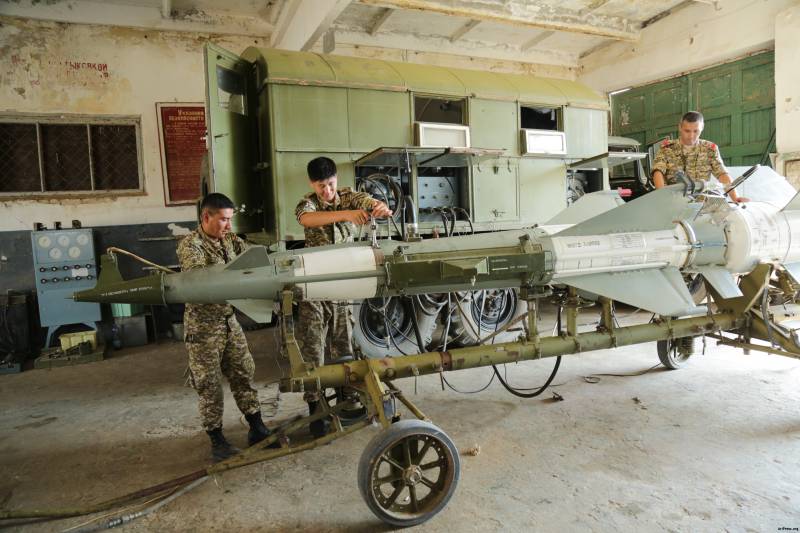
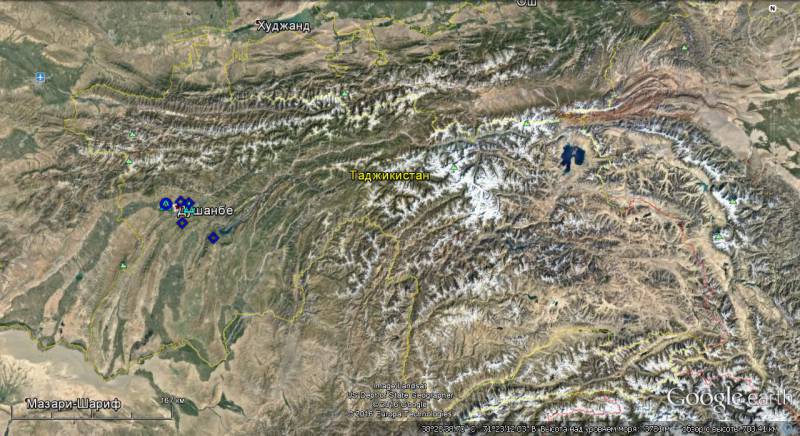
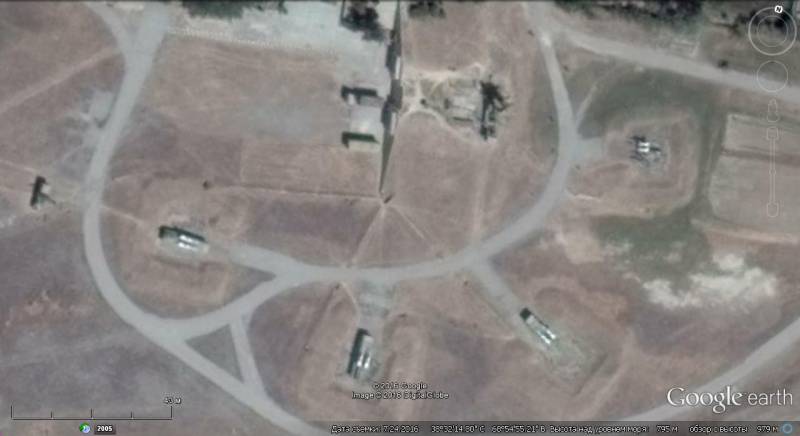
Information